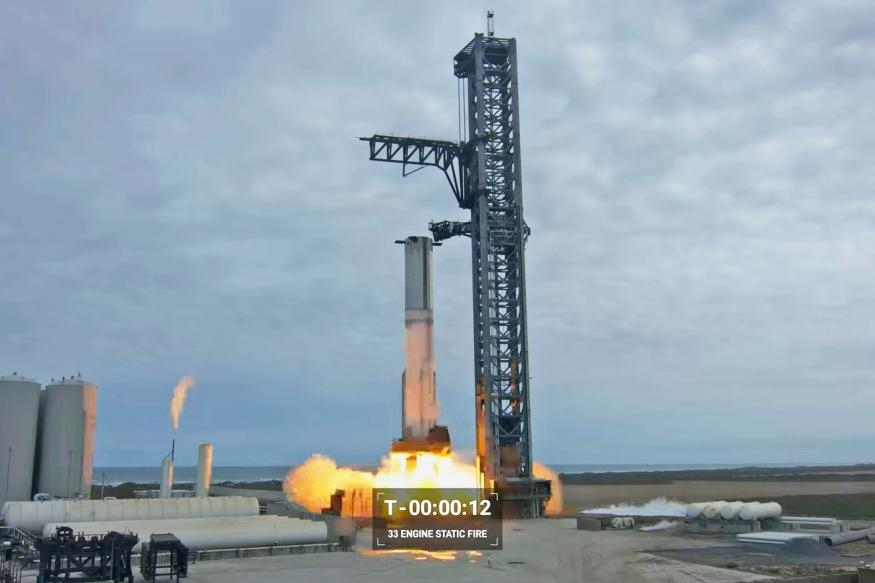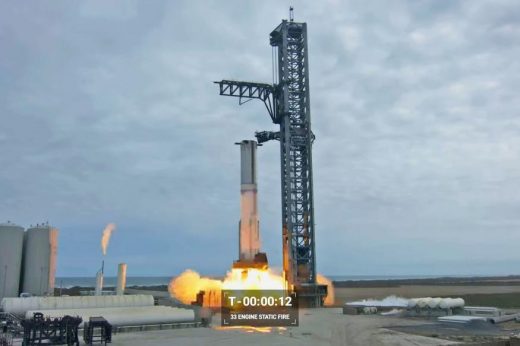SpaceX’s Starship will carry an SUV-sized rover to the Moon in 2026
SpaceX’s first attempt to fire all 33 Starship engines at once ends with mixed results
SpaceX has completed its first full static fire test for Starship, if not quite in a way that makes the first orbital test flight next month sound realistic. The company hoped to fire all 33 Raptor engines at once, but Elon Musk noted that two engines didn’t make it — the mission team shut off one before startup, while the other “stopped itself.” The 31 that did fire lasted the full duration, however, and Musk claims that’s enough to reach orbit.
While SpaceX’s last static fire testing in November was a success, the company only ignited 14 of the booster’s Raptor engines. It had to fire up more engines that that, and it also has to send Starship on multiple successful test flights before it can ferry astronauts to and from the Moon.
As company president Gwynne Shotwell said at the FAA’s annual Commercial Space Transportation conference, Starship has to fly “hundreds of flights before [it flies] people.” She also reminded everyone that Starship’s first flight “is really a test flight” and that “the real goal [for it] is to not blow up the launch pad.”
In mid-2022, SpaceX conducted a test that was designed to simultaneously spin up all 33 engines on the Super Heavy’s Booster 7 prototype. The company was aiming to preview the vehicle’s start-up sequence, but the booster caught fire during the process at its Boca Chica, Texas facility. SpaceX chief Elon Musk revealed on Twitter that the issue that caused the explosion was “specific to the engine spin start test,” because the Raptor engine has a complex start sequence.

(9)



